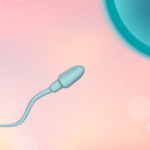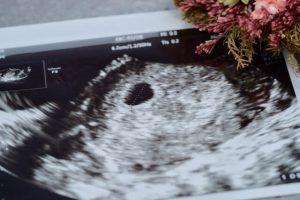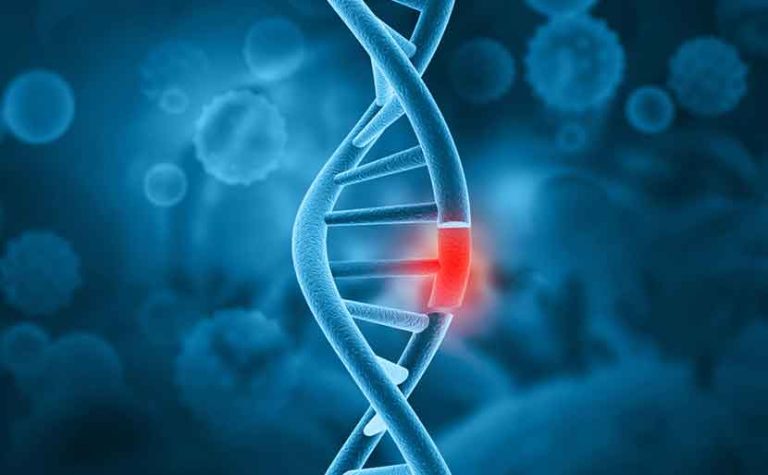Summary of this Article
Neonatal apnea refers to a condition where a baby stops breathing. During the neonatal period, it is common for a baby to stop breathing for a short time after a regular breathing pattern of about one minute. However, it is generally considered an apnea episode if it lasts for more than 20 seconds. Apnea episodes can be a risk factor for sudden infant death syndrome (SIDS) and are more common in premature infants, although they can also occur in full-term babies.
What is Neonatal Apnea?
Neonatal apnea episodes refer to instances where a baby stops breathing. During the neonatal period, it is common for a baby to stop breathing for a short time after a regular breathing pattern of about one minute. However, it is generally considered an apnea episode if it lasts for more than 20 seconds. Apnea episodes can be a risk factor for sudden infant death syndrome (SIDS), and seeing your child experiencing apnea can be very distressing and worrisome.
Apnea episodes are more common in premature infants. However, they can also occur in full-term babies. This article introduces the symptoms, causes, and effects of apnea episodes in both premature and full-term infants.
Apnea in Premature Infants
When a baby born before 37 weeks stops breathing for more than 20 seconds, it is called apnea of prematurity. This is the most common type of apnea episode seen in newborns. It is said to occur in one out of every four premature infants, with the frequency increasing the shorter the gestational period (the time spent in the womb).
During the neonatal period, it is common for a baby to stop breathing for a short time after a regular breathing pattern of about one minute, but this is not included in apnea of prematurity. This is called periodic breathing and is not pathological.
Symptoms of Apnea in Premature Infants
Premature infants who experience apnea episodes generally breathe normally, but during an episode, they stop breathing for more than 20 seconds. However, even if the pause in breathing is less than 20 seconds, it is still considered an apnea episode if it is accompanied by a decrease in heart rate or cyanosis.
If the apnea continues, the heart rate may decrease, and the reduction in blood oxygen levels can cause cyanosis, making the skin appear pale or blue.

Causes of Apnea in Premature Infants
Breathing is controlled by the brain. In premature infants, if the part of the brain that controls breathing is not yet mature, apnea episodes can occur. In this case, as the brain develops, the apnea episodes will decrease.
Additionally, physical obstructions such as a narrowed airway or a bent neck can also cause apnea episodes.
Apnea of prematurity generally has no other cause than the infant being premature. However, the frequency and severity of apnea episodes can increase or worsen due to other factors such as infections or hypoglycemia.
Apnea in Full-term Newborns
While apnea episodes are commonly seen in premature infants, they can also occur in full-term newborns born after 37 weeks. This can happen if there are complications during or after birth. Additionally, there is always the possibility that the infant may have had abnormalities while still in the womb.
Unlike apnea of prematurity, apnea episodes in full-term newborns are often caused by underlying conditions. In particular, apnea episodes can often be an early symptom of serious illnesses, so it is important to be vigilant.
Symptoms of Apnea in Full-term Newborns
The symptoms of apnea episodes in full-term newborns are essentially the same as those in premature infants. These include temporary cessation of breathing for more than 20 seconds, decreased heart rate, and cyanosis caused by reduced blood oxygen levels.
Causes of Apnea in Full-term Newborns
Below are some of the main causes of apnea episodes in full-term newborns. Of course, there are various other causes as well.
- Upper airway malformations
- Infections
- Gastroesophageal reflux
- Airway obstruction
- Brain abnormalities
- Metabolic disorders
The upper airway refers to the path from the nose to the back of the throat. If this pathway is congenitally narrow, it can become obstructed due to changes in posture, leading to apnea episodes.
Infections such as whooping cough and respiratory syncytial virus (RSV), which are common in infants, can be causes. Severe infections like sepsis can also be life-threatening.
Gastroesophageal reflux occurs when the stomach contents flow back into the esophagus. While this can be due to abnormalities in the body, it often improves with changes in the baby’s position during and after feeding. Airway obstruction is a physical cause. If there are no malformations in the airway, paying attention to the baby’s position, similar to gastroesophageal reflux, can help alleviate the problem.
Brain abnormalities can include issues with the respiratory center, seizures, or intracranial hemorrhage. Metabolic disorders may include conditions like hypoglycemia or electrolyte imbalances.
Chromosomal Abnormalities and Apnea
Apnea episodes can occur in conjunction with developmental disorders caused by chromosomal abnormalities.
For example, in cases of Trisomy 18, lung malformations or underdevelopment can be observed, leading to weak breathing and resulting in apnea. Trisomy 13 also frequently causes apnea episodes during the neonatal period.
Additionally, there are diseases caused by genetic mutations that can impair the brain’s ability to properly send breathing commands.
NIPT (Non-Invasive Prenatal Testing)
NIPT (Non-Invasive Prenatal Testing) is a non-invasive prenatal genetic test that can detect chromosomal abnormalities in the fetus by taking a blood sample from the pregnant woman.
Since the test can be conducted using blood drawn from the arm, there is no risk of miscarriage, making it a safe procedure. Additionally, as the test can be done as soon as a pregnancy is confirmed via ultrasound, it is suitable for those who want to know the baby’s condition early.
At Hiro Clinic NIPT, the NIPT (Non-Invasive Prenatal Testing) mainly screens for Trisomy 21, Trisomy 18, and Trisomy 13. Therefore, it is ideal for detecting conditions like Trisomy 18 and Trisomy 13 that can cause apnea episodes.
Treatment of Neonatal Apnea
When an apnea episode occurs, gently stimulate the baby to encourage breathing. In most cases, this is sufficient to improve the situation unless it is severe. If breathing does not resume after stimulation, a mask or machine may be used to assist breathing.
If the episodes are frequent, caffeine may be administered as a stimulant. Caffeine is often used as it is low in toxicity and can be given orally, making it an effective stimulant for apnea episodes.
Additionally, if apnea episodes appear or worsen, it is important to check for any underlying conditions. If a cause is identified, treatment for the underlying condition should be pursued simultaneously.

Impact of Neonatal Apnea on Babies
Apnea episodes can have various causes, and the impact on the baby differs depending on the cause.
When caused by prematurity, apnea episodes often subside as the baby grows. However, the shorter the gestational period, the more likely it is that the apnea episodes will persist longer, increasing the potential impact on the baby.
The duration of apnea episodes varies for each baby. If the episodes are solely due to prematurity and there are no other underlying causes, they typically resolve by about 3 to 4 weeks after the original due date.
Aftereffects of Apnea Episodes
Unless the condition is very severe, it is rare for apnea episodes to cause lasting aftereffects. The likelihood of death is also low.
In severe cases, hospitalization may be necessary. During hospitalization, respiratory support with a ventilator and medication administration may be required. However, once the episodes stabilize, discharge is usually relatively smooth, and lasting aftereffects are uncommon.
Conclusion
In this article, we discussed neonatal apnea episodes.
Apnea episodes are commonly seen in premature infants, but they can also occur in full-term infants. Causes vary, including underdeveloped brain due to prematurity, infections, airway obstruction, and more. Generally, the episodes subside as the baby grows.
However, if apnea episodes persist for a long time, occur frequently, or each episode lasts for a long duration, it is important to be cautious. There may be underlying abnormalities that are not visible to the eye. If you have any concerns, be sure to consult a healthcare provider.
【References】
- MSD Professional – Pediatrics / Respiratory Issues in Neonates Apnea of Prematurity
- Osaka Medical College – Apnea of Prematurity
- Journal of the Japanese Society of Pediatric Respiratory Diseases – Diagnosis and Management of Apnea and Respiratory Disorders in Neonates
Article Editorial Supervisor

Dr. Keizo Nitta
Director, Hiro Clinic Sapporo Station Clinic
With the increasing trend of advanced maternal age at childbirth, the demand for NIPT (Non-Invasive Prenatal Testing) is on the rise. Moreover, we anticipate that in the future, the accuracy and scope of NIPT will continue to expand. At our clinic, we believe it is our obligation to appropriately communicate the information that can be known and desired in current medical practice to expectant mothers.
Alongside the right to know, there also exists the right not to know. We consider it a medical duty to refrain from disclosing information that the patient does not wish to know. At our clinic, you have the option to choose the information you want to know.
We encourage you to consult with us to determine which plan is best for you and to select the testing that suits your needs.
Career Summary
1996 Saitama Medical University Hospital
2002 Kanagawa Children’s Medical Center
2004 Kokumin Kyosai Yokohama Minami Kyosai Hospital
2010 Yokosuka Municipal Uwamachi Hospital
2012 Municipal Mikasa General Hospital
2015 Medical Corporation Ryokuryokai Nagunuma Pediatrics
2019 Town Minami Horo Hospital (National Health Insurance)
Qualifications
Member of the Allergy Society
Member of the Pediatric Allergy Society
 中文
中文






















